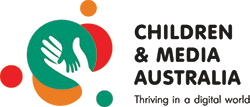Dream Horse

Short takes
Not suitable under 8; parental guidance to 11 (language, themes, sexual references, scary scene)

This topic contains:
- overall comments and recommendations
- details of classification and consumer advice lines for Dream Horse
- a review of Dream Horse completed by the Australian Council on Children and the Media (ACCM) on 15 June 2021.
Overall comments and recommendations
| Children under 8 | Not suitable due to themes, coarse language, sexual references and a scary scene. |
| Children aged 8–11 | Parental guidance recommended due to themes, coarse language, sexual references and a scary scene. |
| Children over the age of 11 | Ok for this age group. |
About the movie
This section contains details about the movie, including its classification by the Australian Government Classification Board and the associated consumer advice lines. Other classification advice (OC) is provided where the Australian film classification is not available.
| Name of movie: | Dream Horse |
| Classification: | PG |
| Consumer advice lines: | Mild themes and coarse language |
| Length: | 113 minutes |
ACCM review
This review of the movie contains the following information:
- a synopsis of the story
- themes
- use of violence
- material that may scare or disturb children
- product placement
- sexual references
- nudity and sexual activity
- use of substances
- coarse language
- the movie’s message
A synopsis of the story
Empty nester Jan (Toni Colette), who works as a ‘checkout chick’ by day and a bartender by night, is tired of living a mundane life in a small, down-and-out, Welsh village. Jan dreams of something different and comes up with the plan of breeding a racehorse. Using the £300 she has saved, Jan buys a brood mare and convinces her husband Brian and twenty townsfolk, including tax accountant and former syndicate member Howard (Damian Lewis), to join together to create a syndicate to pay for a stud free and later for a trainer. When the foal, Dream Alliance, is born it seems he has less than one percent chance of ever racing but Jan sees something in him and takes him to the best trainer in the county (Nicholas Farrell). Initially dismissing Dream and his humble beginnings, through Jan’s persistence, the trainer soon notices a spunk and spirit and agrees to train Dream on a trial basis. Before long Dream is not only racing but winning. When a terrible accident threatens to derail everything they have worked for, the syndicate must ask itself what is truly important. Jan’s faith in Dream allows him to live and while they are told he may never race again, it is Dream’s resilience that inspires a nation.
Themesinfo
Children and adolescents may react adversely at different ages to themes of crime, suicide, drug and alcohol dependence, death, serious illness, family breakdown, death or separation from a parent, animal distress or cruelty to animals, children as victims, natural disasters and racism. Occasionally reviews may also signal themes that some parents may simply wish to know about.
Gambling; Alcoholism; Elitism; Teen pregnancy.
Use of violenceinfo
Research shows that children are at risk of learning that violence is an acceptable means of conflict resolution when violence is glamourised, performed by an attractive hero, successful, has few real life consequences, is set in a comic context and / or is mostly perpetrated by male characters with female victims, or by one race against another.
Repeated exposure to violent content can reinforce the message that violence is an acceptable means of conflict resolution. Repeated exposure also increases the risks that children will become desensitised to the use of violence in real life or develop an exaggerated view about the prevalence and likelihood of violence in their own world.
- None noted.
Material that may scare or disturb children
Under fiveinfo
Children under five are most likely to be frightened by scary visual images, such as monsters, physical transformations.
There are some scenes in this movie that could scare or disturb children under the age of five, including the following:
- Children in this age group are likely to be scared or disturbed by the following scenes.
Aged five to eightinfo
Children aged five to eight will also be frightened by scary visual images and will also be disturbed by depictions of the death of a parent, a child abandoned or separated from parents, children or animals being hurt or threatened and / or natural disasters.
In addition to the above-mentioned violent scenes and scary visual images, there are some scenes in this movie that could scare or disturb children aged five to eight, including the following:
- Dream’s mother dies giving birth to him. It is off camera but briefly described and Jan is very upset by the news.
- Dream has an accident at a race and is lying on the ground with a bloody leg. They are attempting to treat him while at the same time preparing a gun to shoot him and put him out of his misery. The scene is very tense and emotionally charged as the syndicate must all decide on what they will do. Meanwhile, Dream is shown writhing on the ground, his eyes bulging in pain. Some children are likely to be distressed by the scene.
- Jan’s father dies (off screen) and Jan is seem packing up his things and putting them in bags. Jan’s father never showed he cared about what Jan was doing but going through his belongings she finds every clipping of anything she had ever done and understood that, even though he never told her he was proud of her, he silently celebrated all of her achievements. This causes her to break down and sob uncontrollably. The emotional intensity is likely to be upsetting to some children, especially anyone who has lost a parent or grandparent.
Aged eight to thirteeninfo
Children aged eight to thirteen are most likely to be frightened by realistic threats and dangers, violence or threat of violence and / or stories in which children are hurt or threatened.
- Nothing further of concern.
Product placement
The following products are displayed or used in this movie:
- English Tea Cakes
- Fairy laundry detergent.
Sexual references
There are some sexual references in this movie, including:
- Jan tells Brian that she is, “having an affair with John the post”.
- A character says, “tits up”.
- Brian tells Jan he should have watched the stallion mate with the mare. To which she replies: “Would you want someone watching?” Brian says: “I am no stallion”, and Jan responds with: “You can say that again”.
- Jan's father holds a grudge against Brain for, “getting her in the family way”, when Jan was only 17.
- When a character is told that his fly is open, he responds with: “The cave may be open but the beast is asleep”.
Nudity and sexual activity
There is some nudity and sexual activity in this movie, including:
- A character catches the bus with his pants only halfway on and his underwear still showing.
- The same character strips down to his underwear in a bar. He is later seen dancing in the street wearing only his skivvy and a flag.
Use of substances
There is some use of substances in this movie, including:
- There is frequent drinking throughout the film as characters drink in the local pub or at meetings. Wine and champagne are offered at races and one character is perpetually drunk.
- A character sprays beer all over patrons at a race and tries to smuggle drinks inside the venue.
- Characters drink in a bus on the way to and from a race.
- Jan pours and serves beer from a tap at the bar.
Coarse language
There is some coarse language in this movie, including:
- Bastard
- Bloody
- Bollocks
- Sod off
- Pillock.
In a nutshell
Dream Horse is a feel-good drama based on a true story. Not suitable for younger audiences, this film is best suited to older children and adults and is likely to be enjoyed by those who love horses or stories about defying the odds.
The main messages from this movie are to follow your dreams; to do what you were born to do; to have hope; and to always give second chances.
Values in this movie that parents may wish to reinforce with their children include:
- Teamwork
- Perseverance
- Integrity
- Hope
- Respect
- Dedication.
This movie could also give parents the opportunity to discuss with their children attitudes and behaviours, and their real-life consequences, such as:
- Thinking only about money rather than the quality of a life.
- Gambling on horse races. It is great if you win but what happens if you lose?
- Assuming if someone doesn’t have money, they are inferior of worthless.
- Excessive alcohol consumption.
Movie Review Search
Title:
Tip: Leave out the first A, An or The
Age suitability:
Selecting an age will provide a list of movies with content suitable for this age group. Children may also enjoy movies selected via a lower age.
About our colour guide
Content is age appropriate for children this age
Some content may not be appropriate for children this age. Parental guidance recommended
Content is not age appropriate for children this age
CMA thanks the Romeo family for its support

About CMA
Children and Media Australia (CMA) is a registered business name of the Australian Council on Children and the Media (ACCM).
CMA provides reviews, research and advocacy to help children thrive in a digital world.
ACCM is national, not-for-profit and reliant on community support. You can help.
ABN: 16 005 214 531
- Home
- Site Map
- Disclaimer
- © Children and Media Australia 2012 - 2025





